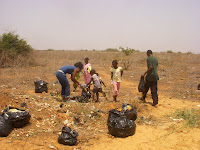
This morning the latest tropical disturbance is approximately 500 miles from Barbados and moving towards the islands. The models are unclear about the intensity or path of this storm with some showing rapid development as it passes over the islands and others not. The National Hurricane Center puts the chances of a tropical depression forming at 100%. The last disturbance to hit Barbados and the windward Islands TS/Hurricane Tomas was last Halloween (October 31st). The damage was significant and there were fatalities on St. Lucia and Haiti.
At present a TS watch has not been put out, but most likely later in the day. The problem is that these islands are at the outer edge of meteorological measurements. So all estimates of hurricanes are coming from a stray buoy or satellites which need to pass over when the storm is intensifying. I hope that the folks are ready because I believe that they will have 24-28 hours of rough weather beginning late tonight and early tomorrow.
Because we know so little about rapid intensification, it is a bit unsettling given that the disturbance is about to run over some very warm water and it is currently in a low shear environment. There is dry air and dust to the north, but on its current trajectory it may miss both high shear and dry air leading to rapid intensification. We know that this process can occur quickly as last GRIP experiment found Hurricane Earl going from a CAT 1 to a CAT 3 in about 8 hours. Even our best models cannot forecasts this type of intensification.
I hope that Hurricane Tomas has led to better preparation in the islands for this year. The test is coming in 24-48 hours.








